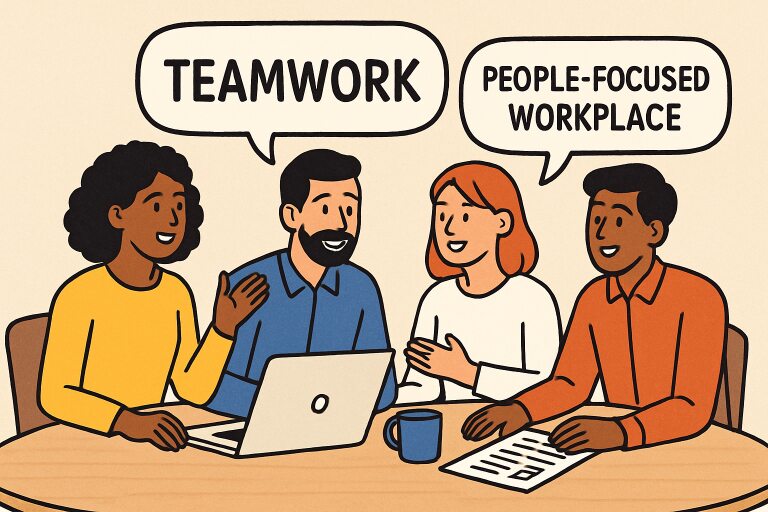People-Focused Strategies for Organizational Growth
Introduction
In a business environment of constant change and increasing competition, the most successful organizations recognize that their greatest assets are their people. Fostering growth through strategies prioritizing personnel well-being, professional development, and engagement is essential for continued innovation and stability. When companies design initiatives that put employees first, they bolster satisfaction and productivity and create a resilient culture set up for long-term success.
Investing in talent strategy consulting is a proven approach to starting this transformation, aligning company goals with workforce capability and motivation.
Organizations implementing people-first policies foster an environment where creativity thrives and challenges are met with proactive solutions. By embedding these values into daily operations, leaders build a solid foundation for adapting to rapid market shifts and workforce expectations. Studies consistently show that employee-centric businesses outperform their competitors in both retention and innovation. For instance, research indicates that satisfied customers spend up to two times more than unsatisfied customers, highlighting the link between employee satisfaction and customer satisfaction.
Ultimately, putting people at the core of business strategy enhances organizational results and contributes to a positive employer reputation. Employees who feel valued and heard are much more likely to commit their talents and energy to the company’s success, fueling momentum for sustainable growth.
These strategies go beyond short-term fixes by embedding positive behaviors, open communication, and continued learning opportunities throughout the organization. This approach ensures that individuals and teams are supported and empowered to reach their full potential.
Prioritizing Employee Well-Being
Employee well-being is no longer a nicety—it’s an organizational imperative. Employers focusing on mental, physical, and emotional health enable their teams to deliver their strongest work. Flexible work arrangements, healthcare benefits, and thoughtful policies addressing burnout are crucial in maintaining high satisfaction levels and minimizing turnover. Research demonstrates that workplaces promoting healthy behaviors often report elevated engagement and productivity.
Practically, this could mean providing access to mental health resources, supporting a culture of unplugging after hours, or introducing wellness activities that fit seamlessly into employees’ routines. When companies lead with empathy and support, they motivate teams to perform at their best and foster unwavering loyalty.
Fostering Open Communication
Open, transparent communication is the pulse of a thriving workplace. Consistent check-ins, constructive feedback cycles, and channels to voice ideas or concerns help break down barriers across departments and seniority levels. Weekly team huddles, digital suggestion boxes, and anonymous surveys are practical tools for enabling dialogue and surfacing actionable insights from employees. Teams that communicate openly are more collaborative, creative, and quicker to address challenges when they arise.
Leadership plays a crucial role in modeling candor and responsiveness, which helps establish trust and psychological safety. According to Gallup, organizations with high employee feedback report stronger performance outcomes and better morale.
Investing in Employee Development
Empowering employees to develop their skills continually enriches both individual and organizational capability. Mentorship initiatives, access to training, and opportunities for cross-functional projects are all effective ways to nurture talent and stimulate innovation. Not only does development boost job satisfaction, but it also directly contributes to an organization’s competitive edge.
Personal growth should be a central value, with career pathways clearly communicated and supported through learning platforms and leadership opportunities. When companies invest in their people’s growth, they send a strong message of trust and belief in their potential, which can spark greater loyalty and performance.
Cultivating a Positive Workplace Culture
Culture is the invisible hand that shapes daily experiences at work. A positive workplace culture is built on mutual respect, inclusion, and shared values. Rituals such as peer recognition programs, team-building activities, and celebrating wins—big or small—make the social fabric that underpins healthy, high-performing teams. When employees identify with an organization’s mission and values, they are more likely to bring discretionary effort and advocate for the company externally.
Inclusion initiatives and regular recognition enhance belonging, attract top talent, and improve retention rates.
Leveraging Technology for Engagement
Leveraging digital platforms for communication, recognition, and professional growth creates connected and agile workplaces. Employee management systems, real-time feedback applications, and collaboration tools make it easier for organizations to recognize contributions and maintain open channels across teams and time zones. Integrating these technologies ensures employees remain engaged and feel seen, no matter where they work.
These platforms’ data-driven insights can guide leadership in making smart decisions about resource allocation and process improvements, ultimately strengthening the overall employee experience.
Aligning Objectives with Performance
It’s essential to link organizational ambitions to individual roles and responsibilities. Setting clear, measurable goals supports accountability and helps employees understand how their work drives company success. Regular performance reviews and agile goal-setting frameworks like OKRs (Objectives and Key Results) or KPIs (Key Performance Indicators) encourage a culture of achievement and adaptability.
When alignment is achieved, motivation and clarity improve, enabling teams to respond cohesively to shifting market demands and organizational priorities.
Building Resilience Through Inclusion
Bolstering inclusive practices builds resilience and prepares organizations for inevitable change. By welcoming diversity of thought, background, and experience, companies create innovative, adaptable, and better-equipped teams to solve complex problems. Effective inclusion isn’t a one-time initiative but a continuous journey built on intentional policies and leadership commitment.
Creating employee resource groups, equitable compensation policies, and ensuring every voice is heard solidifies the organization’s adaptability and drives growth from within.
Conclusion
Organizations must take a strategic, people-first approach to achieve sustainable growth in today’s fast-moving business world. Businesses create environments where individuals and companies thrive by proactively supporting employee well-being, valuing open communication, investing in continual learning, nurturing positive culture, leveraging technology, linking objectives to performance, and championing inclusion. The organizations leading in these areas will continue to stand out as the most resilient, innovative, and attractive workplaces.







